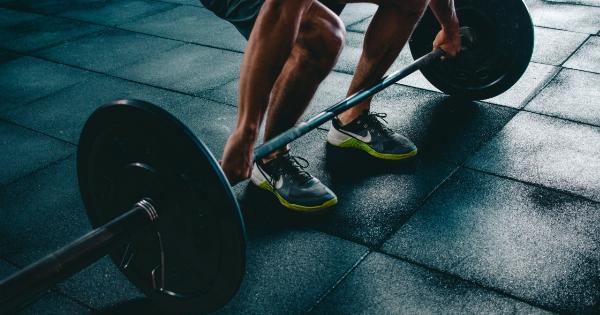When we experience muscle pain, it can be quite debilitating, making it difficult to continue with our daily activities.
Whether it’s the result of an intense workout, a long day at work or an underlying medical condition, muscle pain can significantly impact our quality of life. Thankfully, there are certain exercises we can do to alleviate muscle pain and promote healing.
What Causes Muscle Pain?
There are many causes of muscle pain, including:.
- Overuse or strain: Overusing or straining your muscles, such as through athletics or manual labor, can cause pain and discomfort.
- Injury: An injury to your muscles, such as a tear or sprain, can cause sudden or lingering pain.
- Medical condition: Some medical conditions, such as fibromyalgia or lupus, can cause muscle pain and fatigue.
- Poor posture: Sitting or standing with poor posture can result in muscle pain, particularly in your back and neck.
Why Exercise Helps Alleviate Muscle Pain
Exercise is a powerful tool for managing muscle pain. It can work in a number of ways:.
- Increases blood flow: By getting your blood flowing, exercise can help deliver oxygen and nutrients to your muscles, promoting healing and reducing pain.
- Strengthens muscles: Stronger muscles are less prone to pain and injury. Exercise helps strengthen your muscles, reducing the likelihood of future pain.
- Releases endorphins: Endorphins are chemicals produced in the brain that can help counteract pain naturally. Exercise can stimulate the release of endorphins, reducing muscle pain and promoting relaxation.
- Improves flexibility: Tight muscles are more prone to pain and injury. Exercise helps improve flexibility, reducing muscle tension and pain.
The Remedy Exercise
The Remedy exercise is a simple but effective exercise that can help reduce muscle pain. It involves three steps:.
- Warm-up: Begin by walking in place or performing another low-impact exercise for about five minutes. This will get your blood pumping and prepare your muscles for the Remedy exercise.
- The exercise: Sit on the floor with your legs extended straight in front of you. Slowly bend forward, reaching for your toes. Hold this position for 10-30 seconds, then release. Repeat this stretch five to ten times.
- Cool-down: After completing the exercise, cool down by stretching your muscles for another five to ten minutes. This can involve stretching your arms, legs or other muscles that are particularly tight or sore.
Variations of the Remedy Exercise
If you find the Remedy exercise isn’t quite right for you, there are several variations you can try:.
Seated Twist
Sit on the floor with your legs extended straight in front of you. Bend one knee and place the foot on the outside of the opposite thigh. Place your opposite elbow on the outside of the bent knee and gently twist your upper body in the opposite direction.
Hold for 10-30 seconds, then switch sides. Repeat five to ten times.
Butterfly Stretch
Sit on the floor with the soles of your feet together and knees bent out to the sides. Hold onto your feet and gently pull them towards your body, pressing your knees down towards the floor. Hold for 10-30 seconds, then release. Repeat five to ten times.
Child’s Pose
Start on your hands and knees. Stretch your arms out in front of you and lower your hips back towards your heels. Rest your forehead on the floor and hold for 10-30 seconds. Repeat five to ten times.
Preventing Muscle Pain
While the Remedy exercise and other stretches can help alleviate muscle pain, it’s also important to take steps to prevent it from occurring in the first place. Some tips include:.
- Stay hydrated: Drinking plenty of water can help prevent muscle cramps and reduce the likelihood of muscle pain after exercise.
- Stretch regularly: Even if you don’t experience muscle pain, stretching regularly can help keep your muscles flexible and less prone to pain and injury.
- Use proper form: Whether you’re lifting weights or performing another type of physical activity, using proper form can help reduce your risk of muscle strain and other injuries.
- Take breaks: If you’re doing repetitive motions, like typing on a keyboard, take regular breaks to stretch and move your muscles. This helps prevent muscle fatigue and pain.
Conclusion
Muscle pain can be a frustrating and debilitating condition, but it doesn’t have to control your life. By incorporating exercises like the Remedy exercise into your day, you can help alleviate muscle pain and promote healing.
Speak to your doctor or physiotherapist if your muscle pain is persistent or severe to ensure it is not symptomatic of an underlying condition. Remember, prevention is better than cure, so take steps to prevent muscle pain from occurring in the first place, like stretching regularly and using proper form.



























